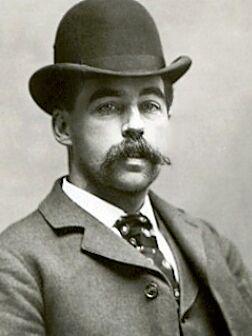Law and Crime
Comfort/Gain Serial Killers vs. Contract Killers
Third-party payment distinguishes them.
Posted October 10, 2021 Reviewed by Jessica Schrader
Key points
- Although there are similarities between comfort/gain serial killers and hired assassins, they are separate and distinct categories.
- Comfort/gain killers commit murder in response to an emotional need for comfort or security, while hit men kill because it is their job.
- Prior to becoming comfort/gain killers, these criminals may have been involved in theft, fraud, or other crimes.

Material gain is the primary motive of comfort/gain serial killers, which are perhaps the oldest recognized and least complicated type of all serial killers. These predators primarily seek financial gain and an improved quality of life through the act of murder.
As noted by Peter Vronsky, they were more common in past centuries, during times of anarchic disorder around the world, when the formal institutions of justice were weak and the value of life was lower than it is today (1). Pirates, highway bandits, black widow husband killers, and landlady killers are vivid examples of hedonist comfort/gain killers over many centuries.
Although there are certain similarities between this type of serial killer and hired assassins (professional hit men), they are separate and distinct categories. Significantly, comfort/gain killers are not professionals because they select their own targets and do not receive a salary from a third party for committing murder. Instead, they commit murder in response to an emotional need for comfort or security. In contrast, professional hit men kill because it is their job to do so.
Generally speaking, hit men are professional contract killers who are employed by either private parties or organized crime groups such as the Italian Mafia. One of the most infamous of all professional hit men was Vincent “Mad dog” Coll who committed dozens of contract murders for the Irish mob in New York City in the 1920s. He gained infamy for the accidental killing of a young child during a mob kidnapping attempt. Coll’s exploits have been chronicled in numerous books and Hollywood films such as Mobsters in 1991.
Unlike serial killers who select their own victims, the targets of hit men are carefully chosen for them by their employers who pay them handsomely to kill on demand. Although professional hit men do meet some of the criteria of serial killers, including the minimum number of victims, I argue that they are not serial killers because their reason to kill involves a business transaction. The murders fulfill no emotional or psychological needs on their part. Moreover, professional hit men do not require a cooling-off period in between their murders because of the pragmatic nature of their killings.
Prior to becoming comfort/gain killers, such criminals are sometimes involved in (and may have previous convictions for) theft, fraud, nonpayment of debts, embezzlement, and other property crimes. Frequently, the victims of such killers are family members or close acquaintances. After the murder of a close friend or relative, a comfort killer will usually wait for a period of time before killing again to allow any suspicions by those in close proximity to subside.
They often use drugs or poison, and most notably arsenic, to kill their victims. Comfort/gain killers may fit into either the organized or disorganized crime category of the FBI, depending on the modus operandi of the perpetrator. For example, those who meticulously plot to poison a family member for an inheritance gain would typically fall into the organized category. Conversely, roaming bandits who kill travelers opportunistically along deserted highways for financial gain would be classified as disorganized killers.
An important criminological fact is that female serial killers are frequently comfort/gain killers. Murderous landlady Dorothea Puente provides a recent and powerful example of a female hedonist comfort/gain killer in the U.S. In the 1980s, Puente ran a boarding house in Sacramento, California, that catered to elderly, handicapped, and mentally ill persons. Puente engaged in fraud and theft by cashing the monthly Social Security checks of her tenants and keeping all of the proceeds for herself. Tenants who complained to Puente about this practice were killed and buried in the backyard of the boarding house.
Puente was arrested in 1988 after law enforcement authorities discovered the bodies of seven people buried in her backyard. All seven, as well as two others buried elsewhere, had been Puente’s tenants. She was charged with a total of nine murders, convicted of three, and sentenced to two life terms. Dorothea Puente died in prison of natural causes in 2011 at the age of 82.
The first serial killer to receive broad notoriety in the U.S. was Dr. Henry Howard Holmes, a charming and ruthless comfort/gain killer who operated in Chicago during the late nineteenth century. Dr. H. H. Holmes murdered his victims, mostly females, for life insurance policy settlements and related inheritance gains. At the time of the 1893 Chicago World's Fair, Holmes opened a hotel, dubbed the “Castle,” which he had designed and built specifically for the purpose of murdering his guests.
The Castle featured secret dungeons, vaults, hidden passageways, torture chambers, and gas chambers. After the completion of the hotel, Holmes targeted his mostly female victims from among his employees (many of whom were required to take out life insurance policies for which the premiums were paid by Holmes and he was the sole beneficiary), as well as his wealthy lovers and hotel guests. He tortured and killed many of them and disposed of their bodies in elaborate fashions.
In October 1894, after the custodian of the Castle informed law enforcement authorities that he was suspiciously not allowed to clean the upper floors of the hotel, the police began a thorough investigation that uncovered Holmes's efficient methods of committing murder and disposing of corpses, including acid pits and a massive furnace in the basement. Upon arrest, Holmes confessed to 27 murders, of which nine were confirmed, but some investigators and criminologists believe that Holmes may have actually murdered as many as 200 people. He was convicted of all charges and executed by hanging in 1896.
The murderous exploits of H.H. Holmes are now part of U.S. popular culture. They have been chronicled in numerous books and films. Interest in Holmes's crimes was revived in 2003 by Erik Larson's best-selling non-fiction book The Devil in the White City: Murder, Magic, and Madness at the Fair That Changed America that juxtaposed an account of the planning and staging of the 1893 World's Fair with Holmes's serial murder career.
Dr. Scott Bonn is a criminologist, best-selling author, college professor, and TV analyst. Follow him @DocBonn on Twitter and visit his website at docbonn.com
References
1. Vronsky, P. 2004. Serial Killers: The Method and Madness of Monsters. New York: Berkley Books.




